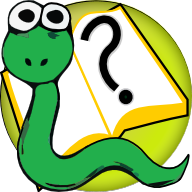Dictionaries and Tuples¶
Introduction¶
The worksheets that make up most of this course don’t cover everything. Two important things they don’t cover are dictionaries and tuples. This sheet tells you a little about those.
Dictionaries¶
The easiest way to explain what a dictionary is is to give an example. So here is one.
>>> dict = {} # An empty dictionary.
>>> dict[1] = 'boo!' # Add a piece of information to it.
>>> dict['ouch'] = 99 # And another.
>>> dict # Let's see what's in there.
{1: 'boo!', 'ouch': 99} # Two associations.
>>> dict['ouch'] # What's associated with 'ouch' ?
99 # This is.
So, a dictionary is a little like a list, except that while an array has
entries labelled by numbers — a[0], a[1], etc — the entries in a
dictionary can be labelled by things other than numbers. Most usefully, they
can be labelled by numbers and by strings.
It’s sometimes helpful to think of a dictionary as being made up of
associations. An association is a piece of information like 'ouch' is
associated with 99 . So the dictionary we built above contains two
associations.
You might use a dictionary to hold an address list, with each association pairing a person’s name up with their address. Or it might hold information about all the players in a multi-player game, or about all the computers connected to a network.
The two parts of an association are sometimes called the key and the
value: you find the value by looking up the key. So in the dictionary we
made above, the keys are 1 and 'ouch', and the corresponding values are
'boo!' and 99.
As we’ve seen, you use dictionaries in the same sort of way as you use lists:
if d is a dictionary then d[k] is the value associated with the key
k.
To change an association in a dictionary, just say something like
dict['ouch'] = 1000. To remove an association entirely, say del
dict['ouch']. (del is short for delete .)
To test whether a dictionary has any association with key k, do something
like this:
>>> dict = {'a': 123, 'b': 987} # Set up a dictionary
>>> 'a' in dict # Any association for 'a' ?
True # Yes.
>>> 'z' in dict # Any association for 'z' ?
False # Nope.
Keys¶
Not all objects are allowed as keys for dictionaries. We’ve already seen that numbers and strings are OK. Unfortunately, lists aren’t. However, there’s a data type very similar to the list that you can use: the tuple. Tuples are the other subject of this sheet…
Tuples¶
A tuple is like a list. There are only two differences you need to care about:
Tuples are immutable. In other words, once you’ve got a tuple you aren’t allowed to change its contents. If
xis a list then you can sayx[1] = 99; if it’s a tuple, you can’t.Tuples are written a little differently: instead of
[1, 2, 3, 4]you say(1, 2, 3, 4).
You can use a tuple almost anywhere where you’d use a list. For instance, you
can say for x in (1, 2, 3, 4): instead of for x in [1, 2, 3, 4] (see
Sheet L (Loops) if you don’t know what that’s about).
If for some reason you want a tuple containing only one object, you can’t write
it as (x) (can you think why?). Instead, you say (x,). Weird, I’m
afraid…
